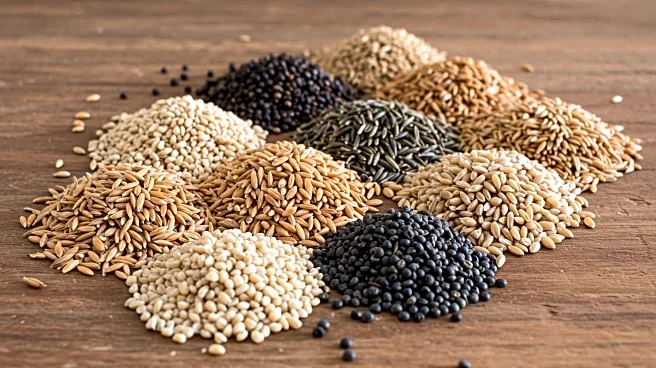What's Happening?
The grain market experienced mixed results with December corn prices slightly increasing by 1¼¢ to $4.06½ per bushel, driven by strong export demand and concerns over dry conditions in the eastern Corn Belt. Meanwhile, November soybeans closed down 1¼¢ at $10.41¼ per bushel, facing resistance at $10.60 despite remaining above major moving averages. Wheat futures saw a slight decline due to ample global supplies, with December CBOT wheat down 2¢ at $5.25 per bushel. The livestock sector showed positive movement, with October live cattle closing up 53¢ at $231.18 per hundredweight and September feeder cattle up $3.58 at $350.93 per hundredweight.
Why It's Important?
The fluctuations in grain prices are significant for U.S. agriculture, impacting farmers' revenue and influencing market strategies. Strong export demand for corn suggests robust international interest, potentially benefiting U.S. exporters. However, dry conditions in the Corn Belt could threaten crop yields, affecting supply and pricing. The decline in wheat prices due to global supply pressures highlights the competitive nature of international markets. Livestock price increases may indicate strong demand, benefiting producers but potentially raising costs for consumers.
What's Next?
The Pro Farmer Midwest Crop Tour will be a focal point for market participants, providing insights into crop conditions and potential yield outcomes. Observations from the tour could influence market expectations and pricing strategies. Additionally, the maturation speed of the U.S. corn crop, which may lead to smaller kernels and lower yields, will be closely monitored as harvest approaches.











